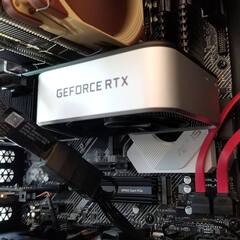New NAS/Plex Server Build - Feedback Welcomed
-
Featured Topics
-
Topics
-
0
-
2
-
gamingandblaming ·
Posted in Cooling0 -
3
-
0
-
SuperFlower ·
Posted in Displays1 -
Prehistoric ·
Posted in CPUs, Motherboards, and Memory2 -
Phenz ·
Posted in CPUs, Motherboards, and Memory1 -
1
-
sunze ·
Posted in Troubleshooting1
-
-
play_circle_filled

Latest From ShortCircuit:
I tried 20 influencer foods, here are the best… and the worst…


.png.255947720031a641abdac78e663b681c.png)











Create an account or sign in to comment
You need to be a member in order to leave a comment
Create an account
Sign up for a new account in our community. It's easy!
Register a new accountSign in
Already have an account? Sign in here.
Sign In Now